We were excited to have so much snow on our playground after our first big snow dump of the season! We worked as a team to make a huge pile in the center of the playground for sledding, which Friday students were able to enjoy after the rain and freeze. It was so much fun sledding down individually and in pairs. We started to learn and practice how to be safe and respectful when sledding.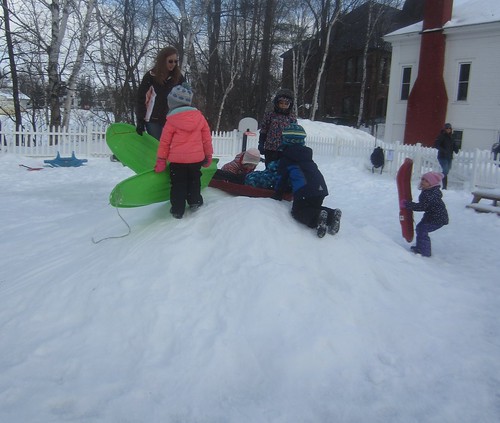

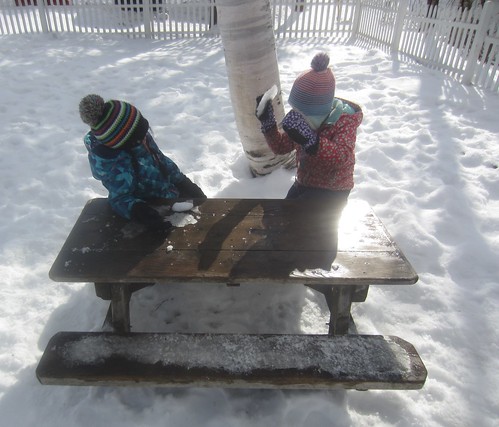 Dental care was introduced through some stories about teeth brushing and care. We demonstrated how to brush our teeth for two minutes until the timer ran through, going in a circular motion and cleaning each section for a count of ten. A tooth-brushing activity was put out in practical life, the play dough dental set was added, and toothbrush painting was available at the art table.
Dental care was introduced through some stories about teeth brushing and care. We demonstrated how to brush our teeth for two minutes until the timer ran through, going in a circular motion and cleaning each section for a count of ten. A tooth-brushing activity was put out in practical life, the play dough dental set was added, and toothbrush painting was available at the art table.
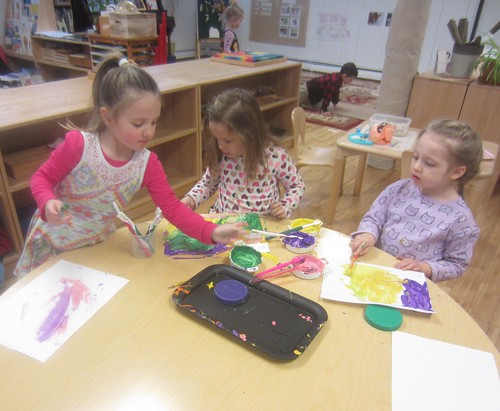



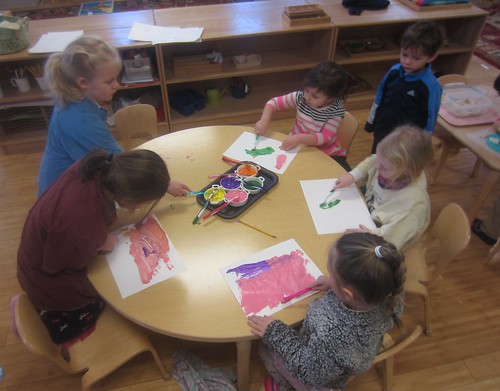 Mr. Bond helped us attach the second side of our tool boxes this week. We donned our safety glasses and carefully pounded in the three nails to secure the wood together.
Mr. Bond helped us attach the second side of our tool boxes this week. We donned our safety glasses and carefully pounded in the three nails to secure the wood together.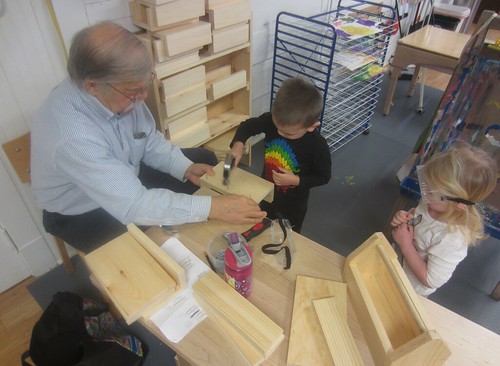
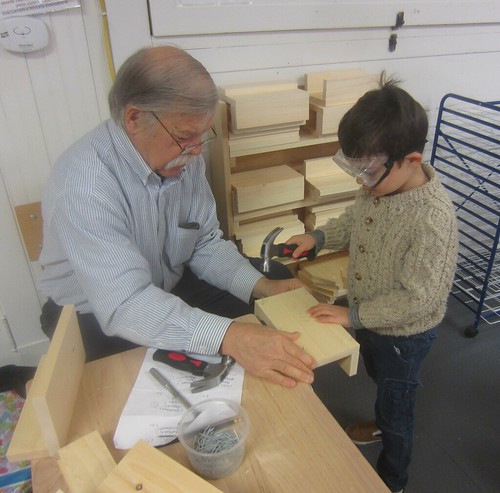 Officer Lucas from Fish and Game, and his intern, Brandon, visited on Wednesday to teach us about New Hampshire mammals and adaptation. He brought pelts for us to examine and learn about. We observed the shape, size, color, and the thickness and length of the fur to help us determine which animal each pelt was from. We compared a pine marten pelt, which had longer, thicker fur for cooler temperatures and higher elevations to a mink pelt, which is sleeker and adapted to being in the water. We observed identifying characteristics of several pelts to help us name them, including white stripes on a black skunk, and tail rings and black mask on a raccoon. We also identified a coyote, beaver, fisher, gray fox, red fox, and muskrat. To conclude we discussed adaptation and how animals adapt to survive. Snowshoe hare and ermine are both animals that change from darker summer fur to white in the winter. Officer Lucas asked why the animals change, and the children said so they would blend in with their surroundings, adapting to stay safe from predators. Each child then worked with a partner to read an animal name, then identify and place it on the matching pelt.
Officer Lucas from Fish and Game, and his intern, Brandon, visited on Wednesday to teach us about New Hampshire mammals and adaptation. He brought pelts for us to examine and learn about. We observed the shape, size, color, and the thickness and length of the fur to help us determine which animal each pelt was from. We compared a pine marten pelt, which had longer, thicker fur for cooler temperatures and higher elevations to a mink pelt, which is sleeker and adapted to being in the water. We observed identifying characteristics of several pelts to help us name them, including white stripes on a black skunk, and tail rings and black mask on a raccoon. We also identified a coyote, beaver, fisher, gray fox, red fox, and muskrat. To conclude we discussed adaptation and how animals adapt to survive. Snowshoe hare and ermine are both animals that change from darker summer fur to white in the winter. Officer Lucas asked why the animals change, and the children said so they would blend in with their surroundings, adapting to stay safe from predators. Each child then worked with a partner to read an animal name, then identify and place it on the matching pelt.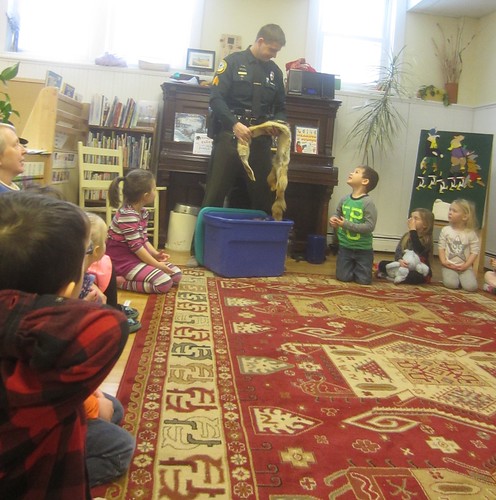
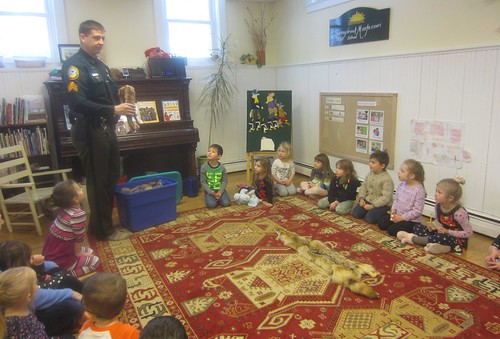
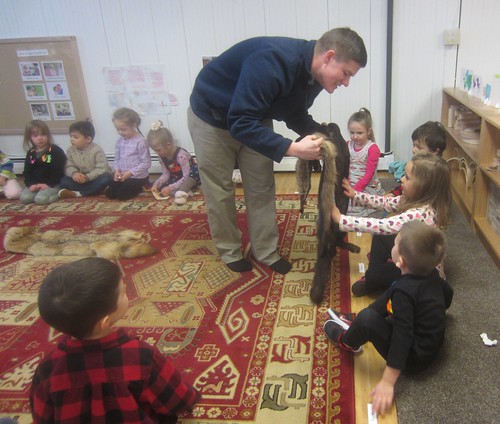
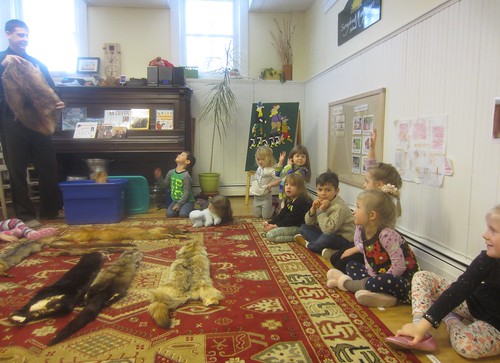
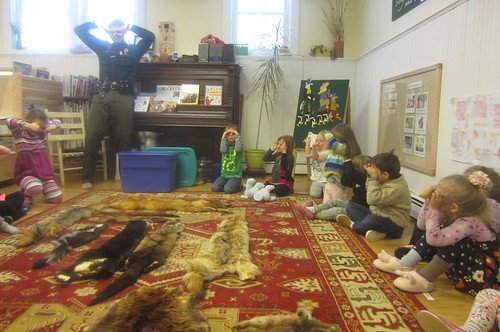


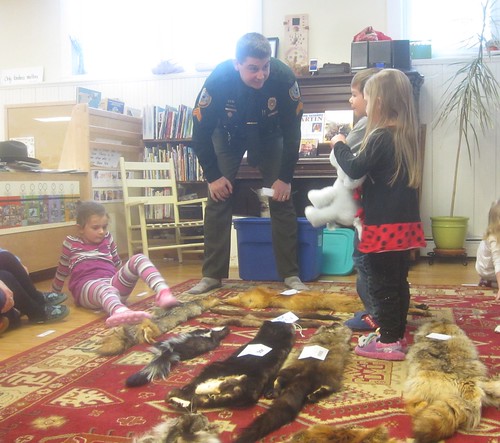
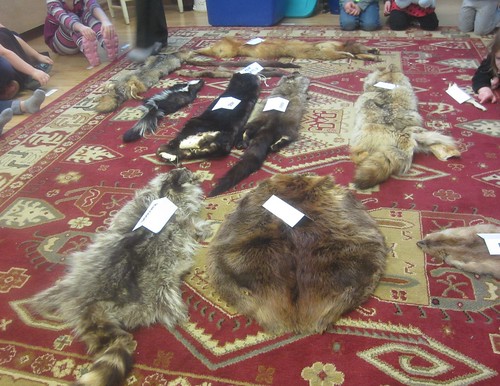
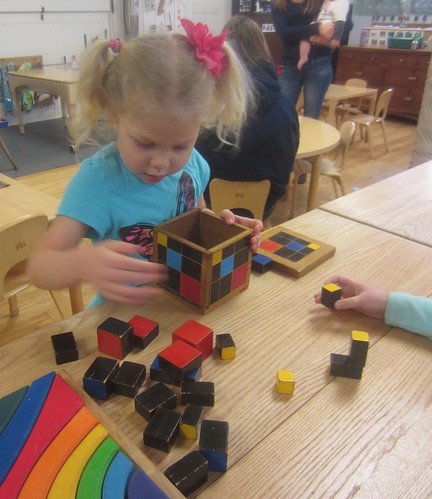

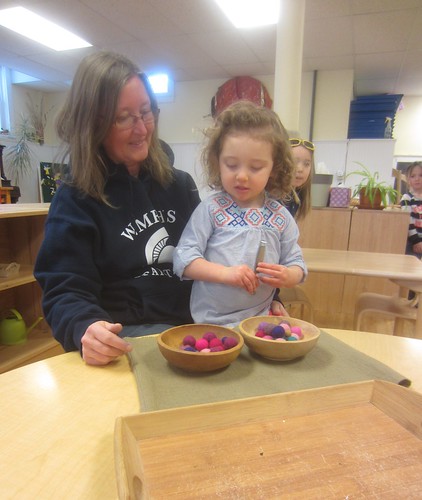




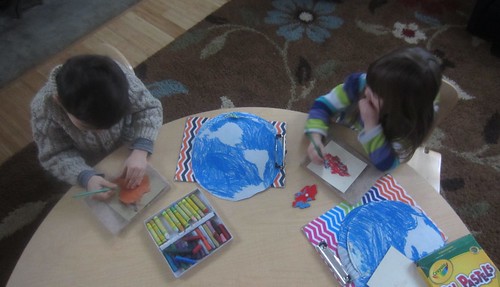

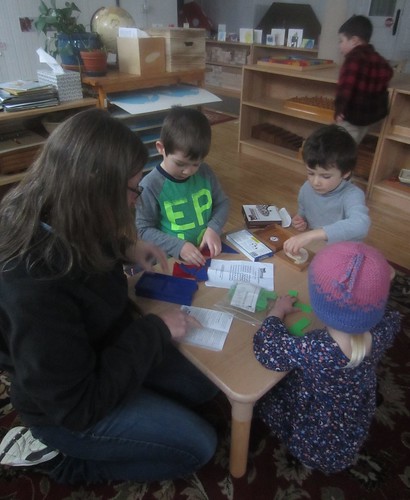

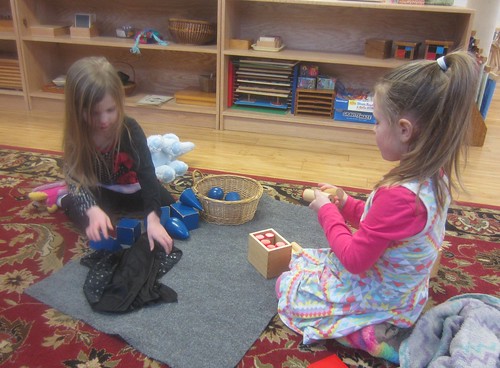
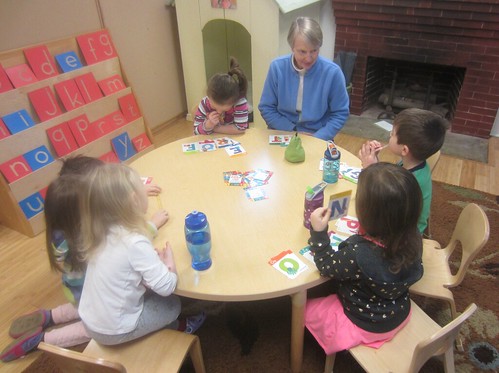
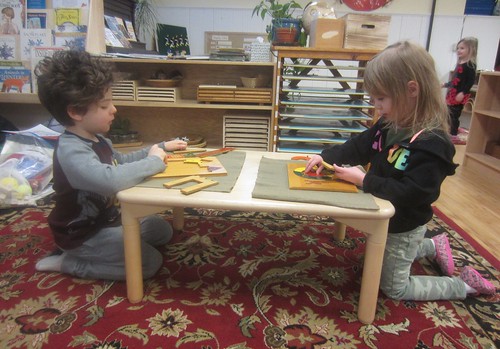
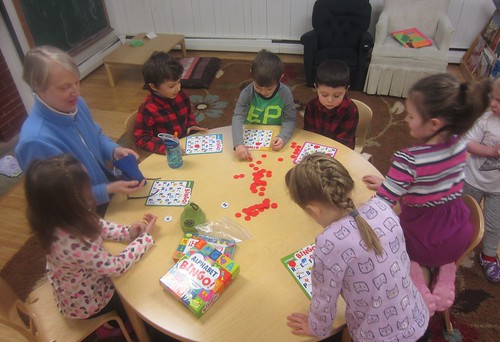
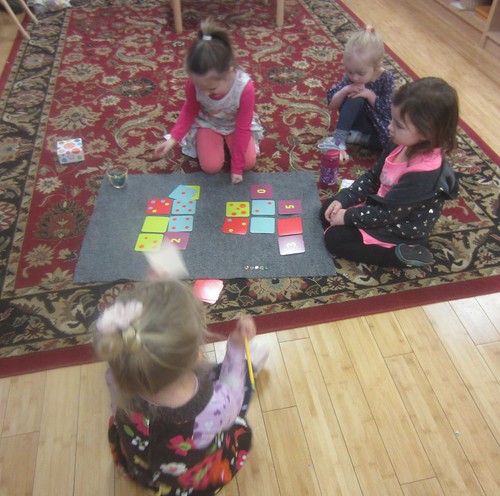
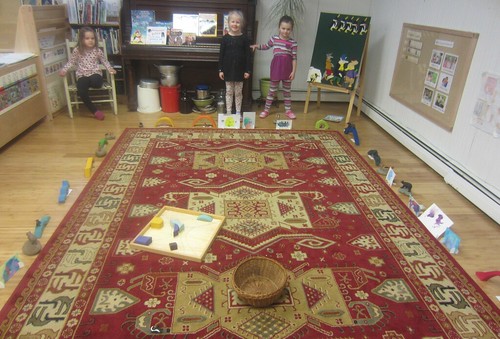



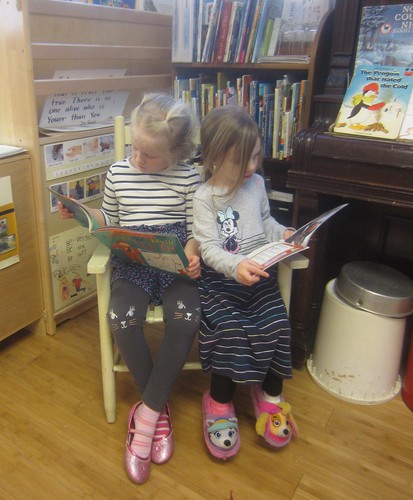
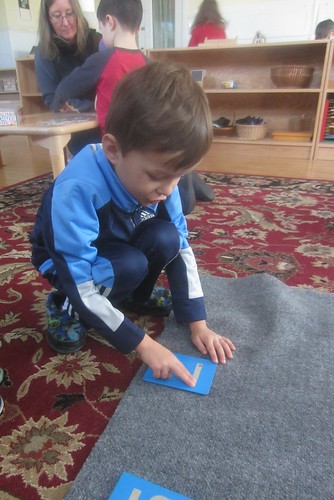
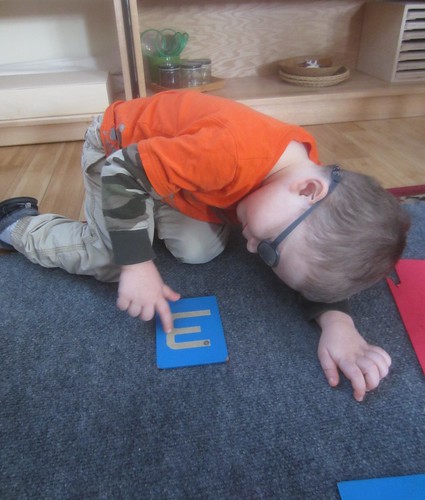
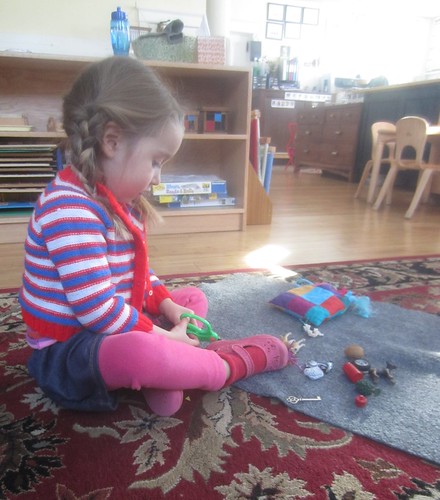
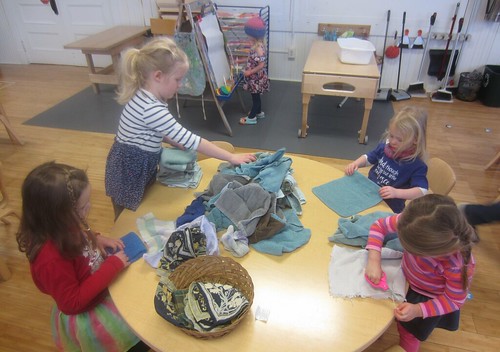
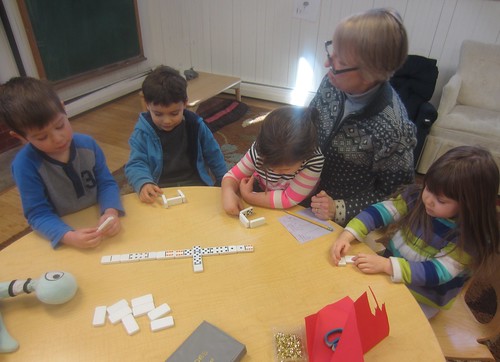
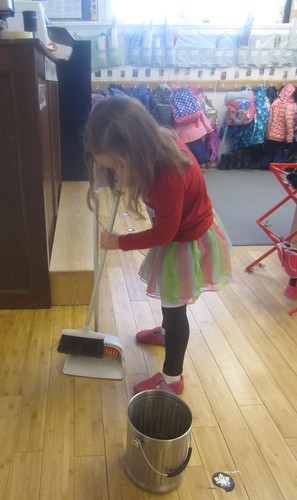
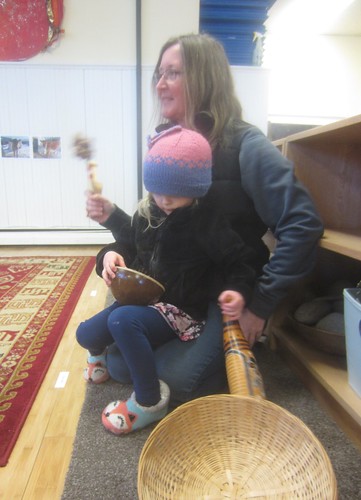

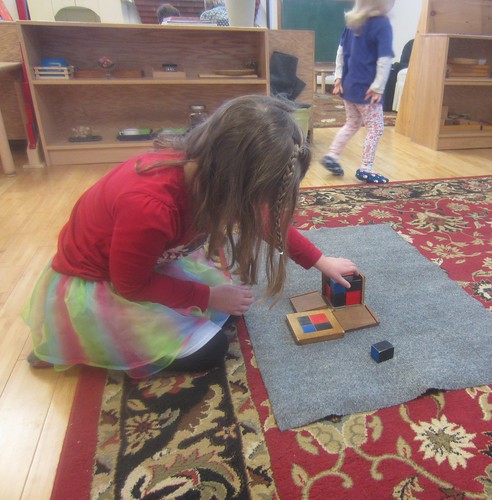
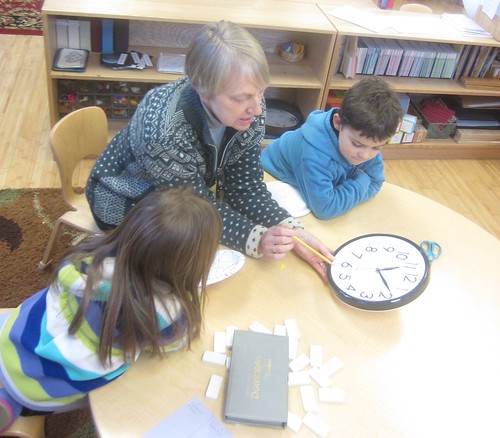 Our very short week concluded with a Friday science lesson on the third of the five senses we have explored – the sense of smell. We read about how scent molecules travel into the nose, where they are trapped in the nerve endings, which bring the information to the brain, where it is interpreted and we determine what the scent is. We then did some smelling. We attempted to close our eyes and use our sense of smell to determine what items we were sniffing. We smelled and identified a banana, honey, glue, mustard, paint, and an onion. We found that we preferred to use our sense of sight to help identify the items we were scenting.
Our very short week concluded with a Friday science lesson on the third of the five senses we have explored – the sense of smell. We read about how scent molecules travel into the nose, where they are trapped in the nerve endings, which bring the information to the brain, where it is interpreted and we determine what the scent is. We then did some smelling. We attempted to close our eyes and use our sense of smell to determine what items we were sniffing. We smelled and identified a banana, honey, glue, mustard, paint, and an onion. We found that we preferred to use our sense of sight to help identify the items we were scenting.
